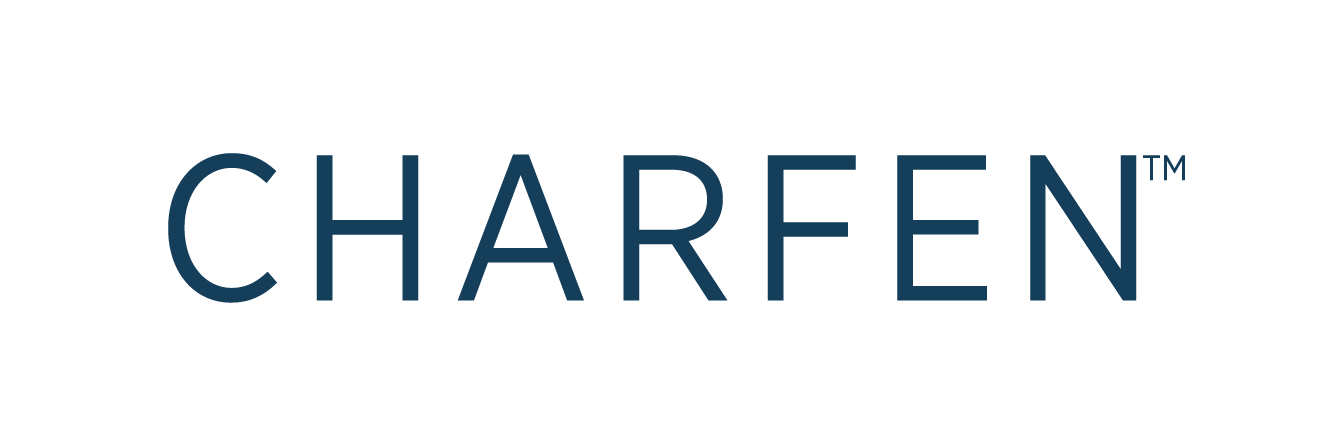Momentum Podcast: 599
Document Core Processes to Thrive
by Alex Charfen
Episode Description
In a crisis or any other time, efficiency is critical in business. One of the recurring issues we see in almost all businesses is that the core processes, the ones that create revenue for the business, are often undocumented and unclear. Having documented processes will separate your business from the crowd and make your business real. These define the foundation of what your business does and who your business is. One of the fastest way to get your business into momentum is to document your processes.
Now is an opportune time to document your processes, clarify them, and make them as efficient as possible. With documentation, you can see a reduction in the time needed to complete a process by as much as 90%. I share this figure with people all the time, let me share with you a recent issue in our company and the 90% reduction that documenting process created.
Full Audio Transcript
This is the Momentum podcast.
There's no denying that in a crisis, or at any other time, one of the most important things in a business is efficiency. One of the recurring issues we see in almost every business is that all of the core processes, the things that move the business forward, that happen on a daily basis that create revenue for the business, they're often undocumented or unclear. Having documented processes is what's going to separate your business from the crowd and make your business real. And in this episode of the Momentum podcast, Alex is going to take you through the frameworks that we teach our highest level clients, how to document their core processes to put their business into momentum and carry them into the stratosphere. I hope you enjoy.
Alex Charfen: I'm Alex Charfen and this is the Momentum podcast. Made for empire builders, game changers, trailblazers, shot takers, record breakers, world makers and creators of all kinds. Those among us who can't turn it off and don't know why anyone would want to. We challenge complacency, destroy apathy, and we are obsessed with creating momentum so we can roll over bureaucracy and make our greatest contribution. Sure, we pay attention to their rules, but only so that we can bend them, break them, then rewrite them around our own will. We don't accept our destiny, we define it. We don't understand defeat because you only lose if you stop and we don't know how. While the rest of the world strives for average and clings desperately to the status quo, we are the minority, the few who are willing to hallucinate there could be a better future, and instead of just daydreaming of what could be, we endure the vulnerability and exposure it takes to make it real. We are the evolutionary hunters, clearly the most important people in the world because entrepreneurs are the only source of consistent, positive human evolution and we always will be.
Today I want to talk about something that you can do in your business right now to make sure that your business does well in the short term. If you have business coming in and things are happening, this is a good idea to do right now. It's also for anyone who has nothing to do, if your business is dead right now, this is an idea of how you can fortify your business, optimize your business, strengthen your business so that when things come back, you are ready to go. If you have a slow down right now, where you're not getting as much business as you normally would, then this is something you can do on the side and there are a lot of businesses out there. We're hearing from them, they're growing like crazy. If you're in a business where this virus and this crisis has increased your business, increased attention to your company, brought more people to you, then this is a great time to do this now also.
And here's what I'm talking about, I'm talking about reinforcing your core processes. Here's what I always tell people in a crisis, you want to create a foundation in your company so strong you could drive a truck into it and that truck bounces off. In a crisis, that's more important than at any other time because the strongest company is the company that's going to win. The company with the best systems, the strongest processes, the clearest documentation, the company that can communicate efficiently and effectively, get people doing what they need to be doing in the fastest way possible. Those are the companies that don't just do well in a crisis. Those are the companies that thrive. Those are the companies that create solutions. Those are the companies with the entrepreneurs that rise above the noise, identify the opportunities, go make them happen, and bring the world with you.
You have a responsibility to do business in a crisis. You have a responsibility to grow yourself, grow your relationships, grow your business, especially when something like this is going on. So here's how you do it. This is how you reinforce your core processes. This is how you document your core processes. There's a step-by-step though, of course, with a process that I want to take you through and that we share with our clients. So basically there are four steps. First, you document the as is process. Second, you document the improvements you want to make. Third, you make the improvements and then fourth you test it like crazy and then there's really a fifth and a sixth test.
You test it like crazy. Then you document your next improvements, then you test it again because there's always additional improvements. Let's just go through the four core steps here. So first and foremost, when you're documenting any process in your business, and I'll use an example in our company, one of the ones that we've documented recently is the communication process we use with someone from the day they sign as a client all the way through their first year of activity with us, or their first year of membership with us. And we started with sign the contract and we go through each step. What is it that every single communication we have with somebody as they're our member.
Now, first we documented an as is process. Now, here's what I mean by that. You get a program like Lucidchart which allows you to do really simple quick flowcharts or a Google draw. I would highly recommend Lucidchart. I think it's the best program on the market. We've used a bunch of them, by far that's my favorite. It works really well with Google drive. It's easy to share charts, it's easy to publish charts, and let people look at them. And so first you document in a flow chart your as is process. And here's what I mean by as is, document exactly what's going on without adding anything additional. Don't change anything yet. And now here's what I want you to know. As soon as you start documenting a core process, as you start making that first flow chart within the first few steps, you're going to be thinking, Oh my gosh, we need to change this. We need to make it better. This isn't what I thought it was. This isn't how I thought things were going.
There's a huge vulnerability here. And here's my advice. When you get all those feelings as you're documenting the as is process, let all those feelings know they're going to be taken care of. Move them aside and continue to document without changing a thing. Because here's what you want, you want a document that shows you reality. Far too many entrepreneurs go out to document a process. They start documenting it, then they start documenting the changes they want to make. Then they have some of what is, some of what's going to be. They get this confused chart and then to go back and correct what's happening in the real world is near impossible because you don't have the before and the after. So you can go address the before and change it to the after. If you mix as is and improvements, it is going to cause you pain in the process of documenting.
I want you to reinforce your core processes fast, so let's get the pain out of there. Let's not use anything that's going to slow you down. So first document the as is process. You should end up with a flow chart that has all of the different steps in any of the core processes in your business. Now the second step is to go back and create a new chart. It's like a duplicate of the first one, only in the new one you document all the changes you're going to make. So now you have the original as is, this is what we're doing now. And then you have a new process that shows you all the changes you're going to make. So first, this is how we tell people to do it. First you document as is, then you document your improvements, and then you take a step back and you say, is this improved process what I want it to be?
And ask yourself as you go through the process, is there any way it can be more effective, more efficient? Documenting a process is something you do once every once in a while. So put some time into it, put some effort into it. Make certain that you're really documenting everything that's going on. And then as you go through and document your improvements, document every change you want to make. Add the additional steps in your flow chart, add additional documentation, add additional emails or text messages or calls or whatever it is that's going to improve that core process in your company so that you can make it more effective.
Now, once you've documented as is reality, then you document the improvements, what you want reality to become. Then once all the improvements are documented, you know what you're going to do. You pull the trigger and you change it in the process. Now, here's why we first document as is, then we make the improvements, and then we change everything at once. Because if this is a core process in your business, you're using it right now. If we change it, there's people already experiencing your company getting delivery. There's people who are already in that process with you, and if we change the process as they're in the middle of it, it gets really confusing. And for you as a business, if you're going to make a change in your core process, whether it's a core sales process, core marketing process, core delivery process, whatever it is, operational process, if you're going to change it, you want to change it all at once so that everything shifts in the business all at once. Here's why so many organizations have challenging core business processes. Here's why so many organizations don't document them, because it's confusing.
It's confusing to document as is. It's confusing to make the improvements. It's really confusing once you start changing things, especially if those processes are being used in a business. So if you go through and you document first, then you document as is, document improvements, make all the changes at once, it eliminates a ton of confusion and you have the visual reference of that improved flow chart that you're going to share with everyone to show what changes you made to the process. This makes it work like crazy. Now the next thing you do after you've documented as is, documented the improvements, made the improvement. You test it like crazy, which means you take a live pass through that process a few times to see, is there any bottlenecks, is there any place where you slow down? Is there any place where it feels challenging? Is there any place where it feels frustrating?
And if there is you improve it again, make the changes again, and then go back and test. And you stay in that place of test, make improvement, test, make improvement, test, make improvement, until it's exactly like you want it. Then you publish and you use that process in your company now. And here's what will happen. You have documentation of the old process before you improved it just in case you need it. You have documentation of everything you were going to improve. Then you have the timeline it took you to improve. Now you have a new process that you've tested, documented and it's absolutely ready to go.
Now, this is such an intense process to go to in a company. It will change everything that you're doing as a business. And I share with business owners all the time that if you document a process, you can improve the efficiency by as much as 90%. Not one nine, but nine zero, 90%. And I say that often because I've just been through so many process documentations where we took a 25 hour project and it ended up being two or three.
Well, just recently in our company. Here's one that we had. Nicole, who was our writer, who is still doing some writing for us. Nicole was writing our documentation from these podcasts. So what I would do with a podcast, she was writing our emails, our social posts, our articles that we write, all of the exposure that we put out there, she was writing it. And what was going on was, we threw together a podcast, we gave it to Nicole, we asked for help. We did it all, we want to get it out fast. We wanted to get it out quickly. We wanted to get the documentation we wanted in the right way, and it was not an efficient process. In fact, as a writer, Nicole was spending about 40 hours a week just getting the body of work that we wanted done because she had to pull from different places. It wasn't efficient, it wasn't effective.
We documented the process, made it a flow chart, brought in a contractor, made it really clear what we wanted and how we wanted it. We created the tools that we wanted, that the process needed, and then we documented as is, the improvements. We put in all the improvements, tested it like crazy three or four times and here's what happened. We went from Nicole working full time on getting the writing that we had done to being able to create a process with her help and execute it with my team, bring in a contractor and now what Nicole was doing with a tight process and a contractor went from 40 hours to about four hours, maybe a little bit more than four hours, but on most days or most times we execute, we are saving 90%.
Now you're not always going to save 90%, I'm using a really dramatic example, but if you document any process, here's what I can tell you happens 100% of the time. You will find improvements in that process. You will figure out what you should be doing that you're not doing. You will get massive efficiency in the process and it will work better in your organization once it's been documented. So if you are, like I said, if you have nothing to do right now and your business is slow, it's a great time to start documenting some processes. Things will come back in most businesses. If this is a slow down, it's a great time to do this now as well and this is an extraordinary time to do this if you are busy because the better you document your processes, the more efficient they are, the more effective you become as a business and the faster you can deliver to your clients and take advantage of opportunity and let's get real. I know there's a lot of challenging stuff going on in the world, but there is still massive opportunity, don't let anyone tell you different.
If you'd like some help in building the core processes of your business, if you want to know how to create a strategic plan that everyone on your team understands so that they feel safe and they feel secure in this crisis, and then if you want the systems and structure where you can work with a team, either in person or virtually or hybrid like a lot of companies are doing right now, where you know every person is achieving, every person's doing what they need to do and you and your team are creating the maximum momentum you possibly could, go to predictablebusinesssolutions.com, answer a few questions for my team. Sign up for a call with us. Let us show you how we can help you predictably grow your business in any market and yes, any market, even this one. Predictablebusinesssolutions.com, we look forward to talking to you soon. Predictablebusinesssolutions.com.
Thank You For Listening!
I am truly grateful that you have chosen to spend your time listening to me and my podcast.
Please feel free to reach out if you have a question or feedback via our Contact Us page.
Please leave me a review on iTunes and share my podcast with your friends and family.
With gratitude,
Alex
- One of the fastest way to get your business into momentum is to document your processes.




